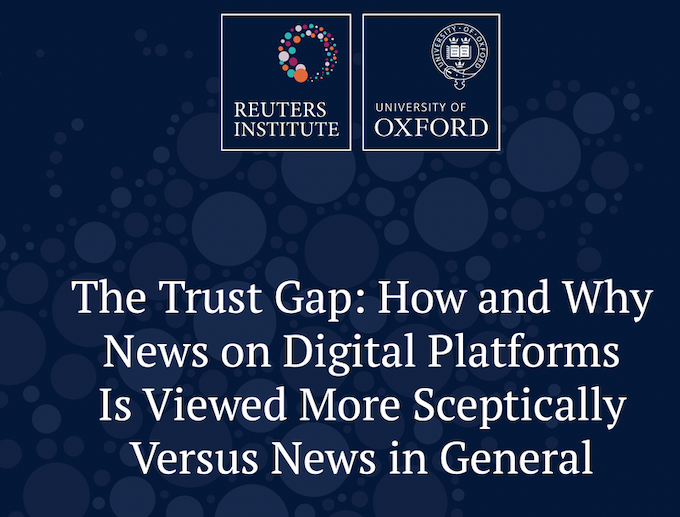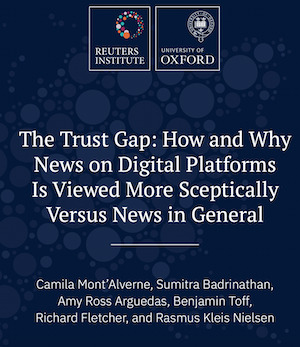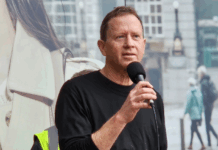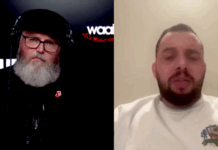
COMMENTARY: By Gavin Ellis
A new study suggests that the news media’s tanking levels of public trust may be made worse merely by association with social media.
The study, released this month by the Reuters Institute at Oxford University, has exposed gaps between trust in news via conventional delivery and the same thing consumed via social media.
It doesn’t matter whether people use social media or not: Levels of trust is lower if they simply associate news with the platforms.
The gap varies between platforms and between countries but the overall finding is that levels of trust in news on social media, search engines, and messaging apps is consistently lower than audience trust in information in the news media more generally.
And our media is becoming more and more associated with social media.
Many of the country’s main news outlets have done deals with Google to appear on its Google News platform. Click on the app and you’ll see stories from Stuff, Newshub, New Zealand Herald and NewstalkZB, Radio New Zealand, Television New Zealand, Newsroom, and the Otago Daily Times.
NZME has brokered a deal with Facebook for the use of content, and other publishers are using the Commerce Commission in the hope of leveling the negotiating playing field.
Split between north and south
The Reuters study (part of the institute’s on-going research into trust in the media) was a split between north and south. The four countries surveyed were the United Kingdom, the United States, India, and Brazil. Two thousand people were surveyed in each country and covered seven platforms: Facebook, Google, Instagram, TikTok, Twitter, WhatsApp, and YouTube.
New Zealand use of social media more closely follows that of the United States and the United Kingdom than India and Brazil so the data relating to those two nations are quoted here. The full results can be found here.
Google showed the smallest gap between platform and general trust in news. It was only one percentage point behind in Britain where 53 percent express general trust in news. In the US, where the general trust level sits at 49 percent, Google was actually four percentage points ahead.
The same could not be said for other platforms.
To ease the calculation, we’ll say roughly 50 percent of respondents in both countries express trust in news in general. Contrast that with news on Facebook, Instagram and Twitter, which score in the mid to high twenties.
TikTok news is trusted by only 20 percent on those surveyed, the same number as WhatsApp rates in the United States (the UK is higher on 29 percent).
Only YouTube emerged from the twenties, with its news content being rated by 33 percent in Britain and 40 percent in the United States.
Complex reasons
The reasons for these gaps in perception of news on social media are complex. This is due in part to the fact that social media serves many different purposes for many different users.

News is only a small part of the interchange that occurs. The study shows that no more than a third use Google or Facebook for daily access to news, with other platforms below 20 percent, and on TikTok only 11 percent.
Large portions of the public, in fact, do not use social media platforms at all (although this does not stop them having opinions about them in the survey). Usage varies between Britain and America but a quarter to a third never use Facebook, Google or YouTube and half to three quarters do not use the remaining platforms.
Previous Reuters research has shown levels of trust in news are higher in those who access it on a regular basis. Distrust is highest among those who have least contact with news and with social platforms. This is confirmed by the latest survey.
News organisations may take some comfort from the findings that young people are more trusting of news on social platforms than older people. The gap is huge in some cases.
An average 14 percent of Americans and Britons over 55 trust news on Facebook. That rises to 40 percent among those under 35. The gap for Google is similar and even greater on other platforms.
News aside, however, people have generally positive views of platforms. More than two-thirds give Google a tick and almost as many give the thumbs-up to YouTube. Both are seen as the best platforms on which learn new things.
Facebook doesn’t fare so well
Facebook does not fare quite so well but at 40-45 percent positive rating, while fewer than a third feel positively about Twitter and TikTok.
In spite of these warm fuzzies, however, the surveys reveal “big problems”, particularly with Facebook.
Almost two-thirds of respondents blame Facebook for propagating false or misleading information and it is also seen as the worst culprit in on-platform harassment, irresponsible use of personal data, prioritising political views, and censoring content.
Although opinions expressed by non-users has complicated the Reuters study, both users and no-users express similar views when it comes to these problems. For example, the proportion of Facebook users that say false or misleading information is a problem on the platform (63 percent) is virtually the same as those who say it is in the overall sample.
The study, which includes an even wider range of variables than are included here, attempts to correlate platform usage and ideas about journalism. After all, it is on such platforms — and from the mouths of some politicians — that users encounter discussions about journalism and criticism of journalists.
The survey asked specific questions about journalists. Half the respondents thought journalists try to manipulate the public to serve the agendas of powerful politicians and care more about getting attention than reporting the facts.
Forty percent thought journalists were careless in what they reported, and a slightly higher proportion thought they were only in it for the money.
Criticism of journalism
The researchers then attempted to identify where and how criticism of journalism is encountered. Twitter users are most likely to encounter it. In the United States almost half said they often see criticism of media there and the UK is not far behind.
More than 40 percent of Facebook and Google users in America encounter it and a third of British users of those two platforms say they see it there. Other (newer) platforms have even higher incidences.
So that is where the criticism of journalists is propagated, but who is doing the criticising? Almost half those surveyed in the United States pointed the finger at politicians and political parties, although a similar number also say the hear it from “ordinary people”.
The figures are slightly lower in the UK but around a third identify political or government sources.
The survey also asked whether other public figures were responsible for criticism of journalists. Celebrities and activists figure in around a third of responses but so, too, do journalists themselves.
The surveys also give some pointers about the relative importance of “clicks” or how much attention our newsrooms should give to real-time analytics. The answer is . . . some.
Respondents were asked to pick the factors that were important in deciding whether they could trust information on online platforms. In both countries fewer than 40 percent said the number of likes or shares were important or very important.
Media source familiarity
Around half paid attention to comments on items but far more important was whether they had heard of the media source. Two thirds were influenced by the tone or language used in headlines and almost 60 percent were influenced by accompanying images.
That finding correlates with another in which respondents were asked who should be responsible for helping to differentiate between trustworthy and untrustworthy content on the internet.
More than two-thirds put that responsibility on media organisations, higher than on tech companies, and significantly higher than on government (although Britons were more inclined toward regulation than their American cousins).
However, if the research proved one thing, it was that the media/social media environment is deeply nuanced and manifests the complexities of human behaviour. The conclusions drawn by the researchers say as much. They leave a couple of important take-aways.
“As a trade-off for expanding reach and scale, newsrooms have often ceded considerable control to these outside companies in terms of how their content is distributed and how often and in what form their work appears on these services.
“Such relationships have been further strained as publishers become increasingly dependent on platforms to reach segments of the public least interested in consuming news through legacy modes, even as platforms themselves have pivoted to serving up other kinds of experiences farther removed from news, recognising that many of their most active users have less interest in such content, especially where politically contentious issues are involved.”
They say the gap they have identified is likely a reflection of this mismatch in audience perceptions about what platforms are for, the kinds of information they get when using the services, and how people think more generally about news media.
“It is possible that the main challenge for news organisations when it comes to building and sustaining audience trust is less about the specific problem of how their journalism is perceived when audiences encounter it online, and more about the broader problem of being seen at all.”
My conclusion
Years ago, we heard the term “News You Can Use” as a response to the challenge of declining newspaper circulation. That was a catchy way of saying “We must be relevant”. The Reuters study is further proof that journalism’s real challenge lies in producing content that ordinary people need to live their daily lives. If that means collating and publishing daily lists of what every supermarket chain is charging for milk, bread, cabbages and potatoes then so be it.
Dr Gavin Ellis holds a PhD in political studies. He is a media consultant and researcher. A former editor-in-chief of The New Zealand Herald, he has a background in journalism and communications — covering both editorial and management roles — that spans more than half a century. Dr Ellis publishes a website called Knightly Views where this commentary was first published and it is republished by Asia Pacific Report with permission.














































